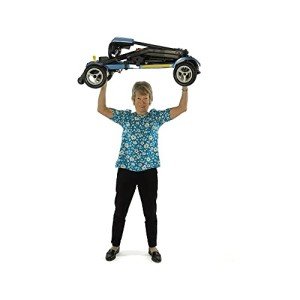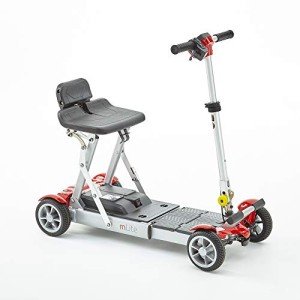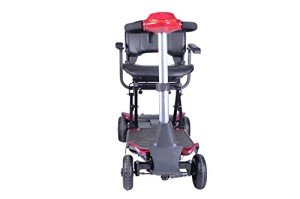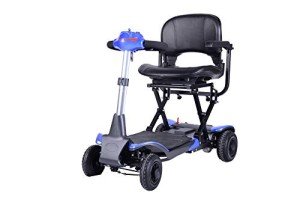In today’s fast-paced world, mobility and independence are crucial, especially for adults who may experience difficulties navigating personal or public spaces. The lightweight 3-wheel mobility scooter emerges as a viable solution, offering individuals ease of mobility, comfort, and autonomy. This guide explores the features, benefits, and considerations surrounding lightweight 3-wheel mobility scooters designed for adults.
Understanding Lightweight 3-Wheel Mobility Scooters
What is a 3-Wheel Mobility Scooter?
A 3-wheel mobility scooter is a powered device designed for individuals with limited mobility. It typically consists of two rear wheels and a single front wheel, making it unique in design when compared to its 4-wheel counterparts. This configuration promotes maneuverability, allowing users to navigate through tighter spaces, like hallways and grocery store aisles, with relative ease.
Key Features
- Lightweight Design: The primary advantage of these scooters is their lightweight frame, making them easier to transport and manage compared to heavier models.
- Compact Size: Their compact size enables users to navigate both indoor and outdoor environments efficiently.
- Enhanced Maneuverability: The three-wheel configuration enhances the scooter's turning radius, making it ideal for urban environments.
- Variety of Options: Available in various models, these scooters often feature different seat types, battery sizes, and speed options.
- User-Friendly Controls: Most lightweight 3-wheel scooters are designed with simple controls, making them accessible for adults of all ages.
Benefits of Using a Lightweight 3-Wheel Mobility Scooter
- Increased Independence: Individuals can travel without relying on others, boosting self-confidence and quality of life.
- Health Improvements: Users are encouraged to spend more time outdoors, contributing to better mental and physical health.
- Cost-Effective: Generally, these scooters are less expensive than larger, more complex mobility devices.
- Easy Transportation: Lightweight models are easier to lift and fit into vehicles, facilitating travel and outings.
Choosing the Right Model
When selecting a lightweight 3-wheel mobility scooter, several factors should be considered:
- Weight Capacity: Ensure the scooter can accommodate the user's weight comfortably.
- Battery Range: Assess how far the scooter can travel on a single charge and consider the user’s daily mobility needs.
- Comfort Features: Look for models with cushioned seats, adjustable armrests, and adequate foot placement.
- Speed: While lightweight models tend to have lower top speeds than heavy-duty ones, it is essential to find a balance that works for the user’s lifestyle.
- Portability: Check whether the scooter can be easily disassembled for transport or whether it can fit in the user’s vehicle.
Considerations for Use
While lightweight 3-wheel mobility scooters offer numerous advantages, users must also keep certain considerations in mind:
- Not Suitable for All Terrains: These scooters may struggle on uneven surfaces or rough terrains due to their lightweight nature.
- Stability Concerns: The three-wheel design might not be as stable as four-wheeled scooters, especially when navigating slopes or uneven ground.
- Weather Limitations: Most models are not intended for adverse weather conditions. It is essential to consider the climate in which the scooter will be used.
Maintenance Tips
To ensure longevity and optimal performance of a lightweight 3-wheel mobility scooter, regular maintenance is essential:
- Battery Care: Charge the battery when not in use and check for any signs of wear or damage.
- Tyre Maintenance: Regularly inspect the tires for wear and ensure they are appropriately inflated.
- Routine Cleaning: Keep the scooter clean from dirt and debris, particularly in the mechanical parts, to maintain functionality.
- Check Controls: Periodically check the controls and ensure they are functioning correctly.
FAQs About Lightweight 3-Wheel Mobility Scooters
1. How much weight can a lightweight 3-wheel mobility scooter hold?
Most lightweight 3-wheel scooters have a weight capacity ranging from 250 to 350 pounds. It is crucial to check the specifications of each model for accuracy.
2. How fast can a lightweight 3-wheel mobility scooter go?
These scooters typically have a top speed of around 4 to 8 miles per hour, depending on the model and battery capacity.
3. Can lightweight 3-wheel mobility scooters be used outdoors?
Yes, many lightweight 3-wheel scooters are designed for outdoor use, though users should be cautious of uneven surfaces and obstacles.
4. Are lightweight 3-wheel mobility scooters foldable?
While some models feature foldable frames for easy storage and transport, it is not a standard option across all lightweight scooters. Always check the product details before making a purchase.
5. What is the average price of a lightweight 3-wheel mobility scooter?
Prices can vary widely based on features and manufacturer, typically ranging from £600 to £3,000.
The lightweight 3-wheel mobility scooter for adults offers a significant advancement in promoting independence and mobility among those facing physical limitations. By providing essential features, practical benefits, and manageable maintenance, these scooters stand out as a commendable solution for improving quality of life. With the right choice and proper use, seniors and adults with limited mobility can navigate their worlds with renewed freedom and ease.






